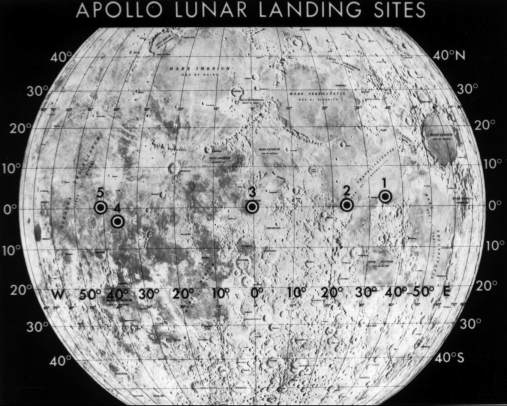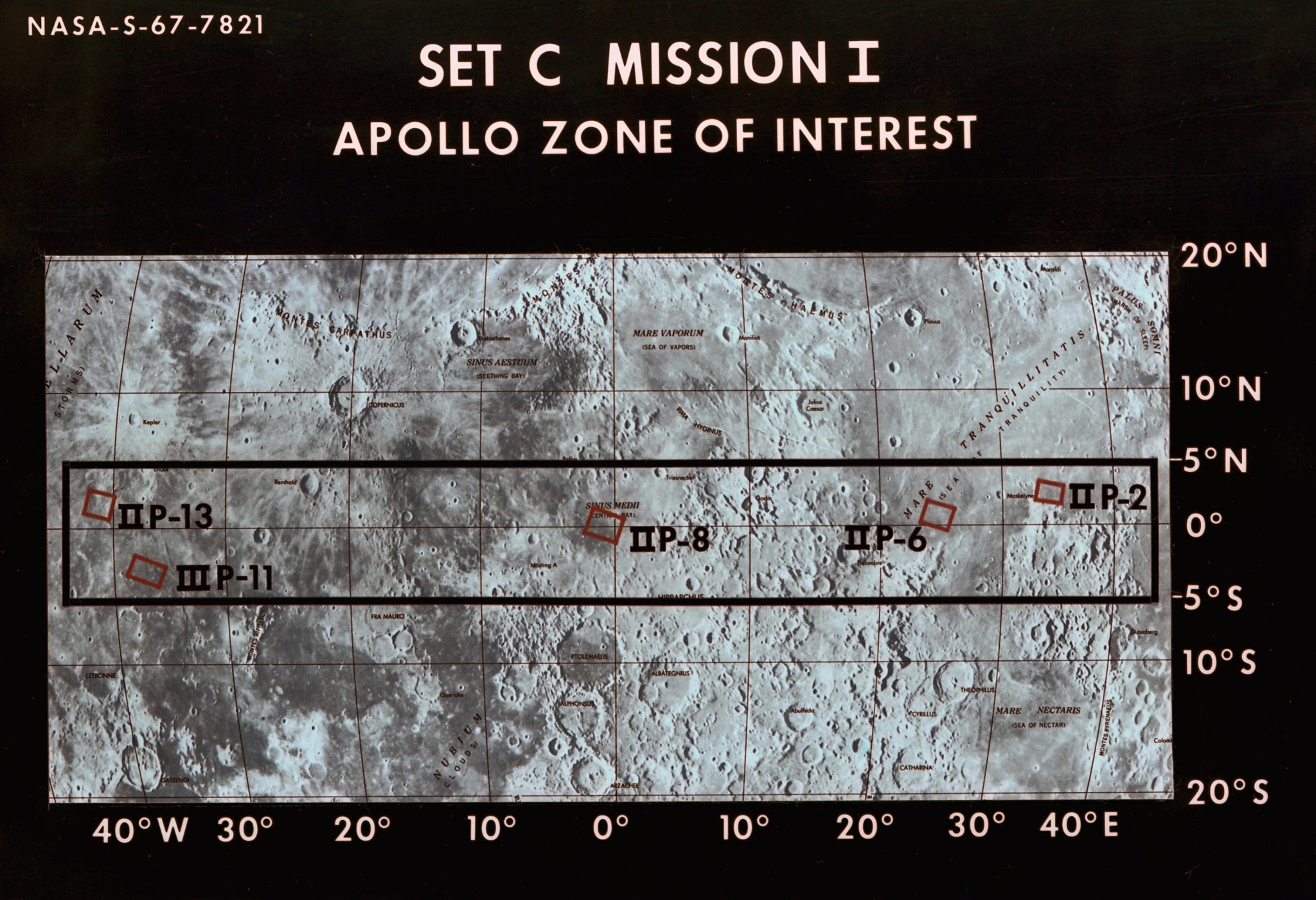On February 8, 1968, after two years of study NASA’s Apollo Site Selection Board announced five potential landing sites for the first human lunar landing. Each of the five 3 by 5-mile landing areas, chosen from an original list of 30 candidate sites, satisfied certain criteria in which astronaut safety was paramount. All five sites were within the Apollo Zone of Interest, an area on the visible side of the Moon between 45 degrees East and West longitude and between 5 degrees North and South of the lunar equator. The sites were centered around the following coordinates:
- Site One: 34o East, 2o40” North, in the Sea of Tranquility (Mare Tranquilitatis);
- Site Two: 23o37” East, 0o45” North, in the Sea of Tranquility (Mare Tranquilitatis);
- Site Three: 1o20” West, 0o25” North, in the Central Bay (Sinus Medii);
- Site Four: 36o25” West, 3o30” South, in the Ocean of Storms (Oceanus Procellarum);
- Site Five: 41o40” West, 1o40” North, in the Ocean of Storms (Oceanus Procellarum).
To select the five areas, the Board used high-resolution orbital photography returned by five Lunar Orbiters and surface data and photographs provided by Surveyors that landed in the general area of some of the sites. The Board considered the following criteria to determine the suitability of the candidate sites:
- Smoothness of the area: the sites should have relatively few craters;
- Approach paths: there should be no large hills, tall cliffs or deep craters which could cause incorrect altitude signals to the landing radar;
- Propellant: the sites were selected to allow for the expenditure of the least amount of propellant;
- Recycling during countdown: the sites were selected to allow for the recycling time of the Saturn 5 if the countdown were to be delayed;
- Free-return: the sites must be within reach of the Apollo spacecraft in the free-return trajectory, that is a path that would allow a coast around the Moon and safe return to Earth without any engine firings should a problem arise on the way to the Moon;
- Lighting: for optimum visibility during the landing approach, the Sun angle should be between 7 and 20 degrees behind the LM; for any given site, this results in a one-day launch window per month;
- Slope: the general slope of the landing area must be less than 2 degrees.
For the first lunar landing, this list would be first shortened to three before one of those would be designated as the prime landing site. The lunar landing site selection was an important step to achieving the goal of landing on the Moon before the end of the decade.
Read oral histories from individuals who participated in the site selection process and talked to the JSC History Office: Noel Hinners and Farouk El-Baz
https://www.jsc.nasa.gov/history/oral_histories/NASA_HQ/Administrators/HinnersNW/hinnersnw.htm
https://www.jsc.nasa.gov/history/oral_histories/El-BazF/el-bazf.htm




























